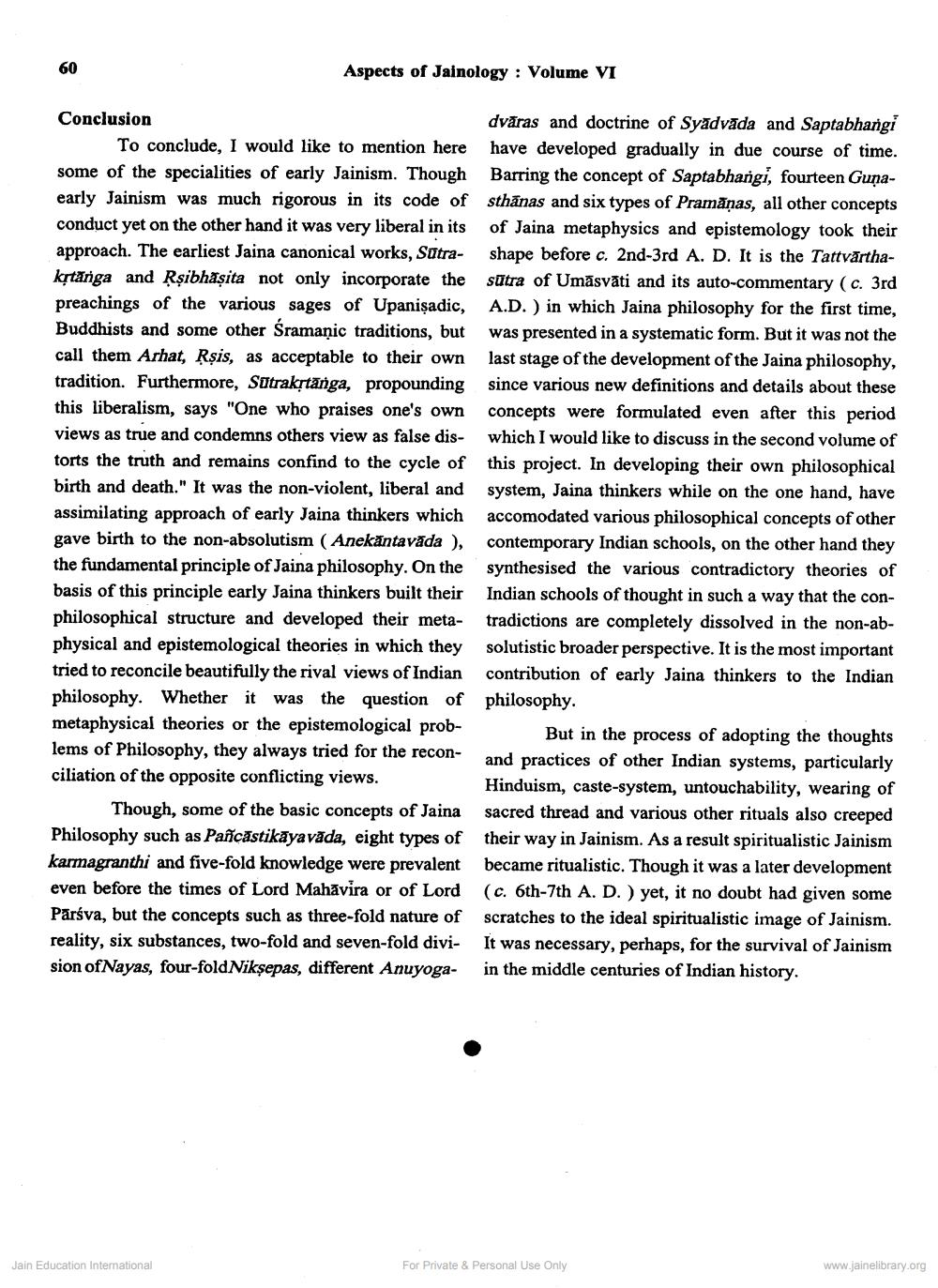________________ Aspects of Jainology : Volume VI Conclusion dvaras and doctrine of Syadvada and Saptabhangi To conclude, I would like to mention here have developed gradually in due course of time. some of the specialities of early Jainism. Though Barring the concept of Saptabhangi, fourteen Gunaearly Jainism was much rigorous in its code of sthanas and six types of Pramanas, all other concepts conduct yet on the other hand it was very liberal in its of Jaina metaphysics and epistemology took their approach. The earliest Jaina canonical works, Sutra- shape before c. 2nd-3rd A. D. It is the Tattvarthakrtanga and Rsibhasita not only incorporate the sutra of Umasvati and its auto-commentary (c. 3rd preachings of the various sages of Upanisadic, A.D.) in which Jaina philosophy for the first time, Buddhists and some other Sramanic traditions, but was presented in a systematic form. But it was not the call them Arhat, Rsis, as acceptable to their own last stage of the development of the Jaina philosophy, tradition. Furthermore, Sutrakitanga, propounding since various new definitions and details about these this liberalism, says "One who praises one's own concepts were formulated even after this period views as true and condemns others view as false dis- which I would like to discuss in the second volume of torts the truth and remains confind to the cycle of this project. In developing their own philosophical birth and death." It was the non-violent, liberal and system, Jaina thinkers while on the one hand, have assimilating approach of early Jaina thinkers which accomodated various philosophical concepts of other gave birth to the non-absolutism (Anekantavada ), contemporary Indian schools, on the other hand they the fundamental principle of Jaina philosophy. On the synthesised the various contradictory theories of basis of this principle early Jaina thinkers built their Indian schools of thought in such a way that the conphilosophical structure and developed their meta- tradictions are completely dissolved in the non-abphysical and epistemological theories in which they solutistic broader perspective. It is the most important tried to reconcile beautifully the rival views of Indian contribution of early Jaina thinkers to the Indian philosophy. Whether it was the question of philosophy. metaphysical theories or the epistemological prob But in the process of adopting the thoughts lems of Philosophy, they always tried for the recon- and practices of other Indian systems, particularly ciliation of the opposite conflicting views Hinduism, caste-system, untouchability, wearing of Though, some of the basic concepts of Jaina sacred thread and various other rituals also creeped Philosophy such as Pancastikayavada, eight types of their way in Jainism. As a result spiritualistic Jainism karmagranthi and five-fold knowledge were prevalent became ritualistic. Though it was a later development even before the times of Lord Mahavira or of Lord (c. 6th-7th A. D. ) yet, it no doubt had given some Parsva, but the concepts such as three-fold nature of scratches to the ideal spiritualistic image of Jainism. reality, six substances, two-fold and seven-fold divi- It was necessary, perhaps, for the survival of Jainism sion of Nayas, four-foldNiksepas, different Anuyoga in the middle centuries of Indian history. Jain Education International For Private & Personal Use Only www.jainelibrary.org




